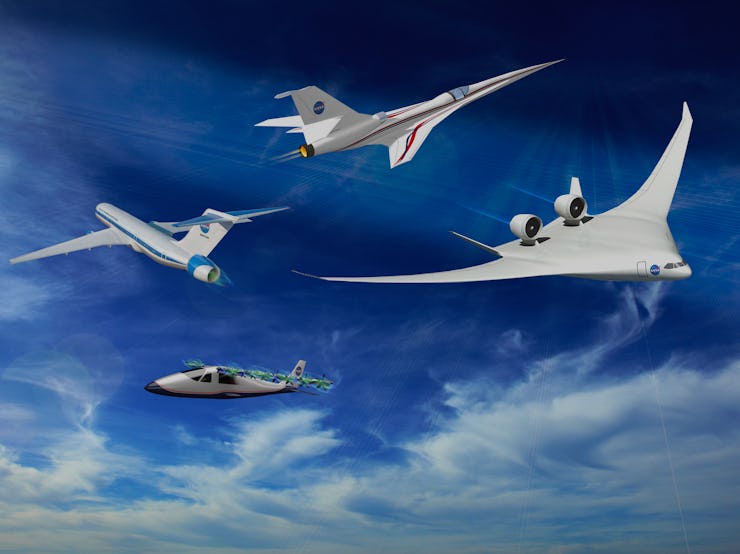NASA Promises Its Future "X-Planes" Will Be Leaner & Greener
The “X” stands for “Xtreme.” (Ok, that’s not true, but it should.)

For more than a half century, NASA and and its predecessor, NACA, designed, built, and tested 56 different aircraft in the X-plane program. It began with the sound barrier-busting X-1, before quietly tapering off four years ago. But now the program is back with a bang.
On February 29, at Ronald Reagan Washington National Airport, NASA administrator Charles Bolden and others will announce the agency’s ten-year plan for the newest series of X-plane designs — with an emphasis on green aviation technologies.
After World War II proved how crucial air superiority is, the United States began to ramp up efforts to test and advance new kinds of aviation technologies. We began with the X-planes: A series of experimental airplanes, helicopters, and rockets designed to push the limits of what was possible with air technology further and further.
Leaner, Greener X-Planes
The newest X-planes are part of NASA’s New Aviation Horizons. The Obama administration’s latest federal budget calls for funding of advancing environmentally-friendly and fuel-efficient aircraft. Although X-planes of old may have been geared toward being bigger, faster, and badder, the latest experimental designs will instead focus on lightweight structures, quieter landing and takeoff mechanisms, and lean shapes. NASA hopes that aiming for these design goals will save the air industry over $225 billion over 25 years.
One tech demo successfully completed tests of flaps that can be changed to different angles during flight, reducing drag and noise.
“We’re at the right place, at the right time, with the right technologies,” said Jaiwon Shin, associate administrator for NASA’s Aeronautics Research Mission Directorate, in a news release. “The full potential of these technologies can’t be realized in the tube-and-wing shape of today’s aircraft.”
This version of a hybrid wing body aircraft concept has turbofan engines on top of the back end, flanked by two vertical tails to shield people on the ground from engine noise.
New X-plane designs will be on display for viewing at the Monday conference. Check back with Inverse next week to see the kinds of strange, amazing planes NASA might soon start building.
This truss-braced wing concept could be another subsonic X-plane; the supported wing has proven in wind-tunnel testing to reduce fuel use by 5 to 10 percent over advanced conventional wings.